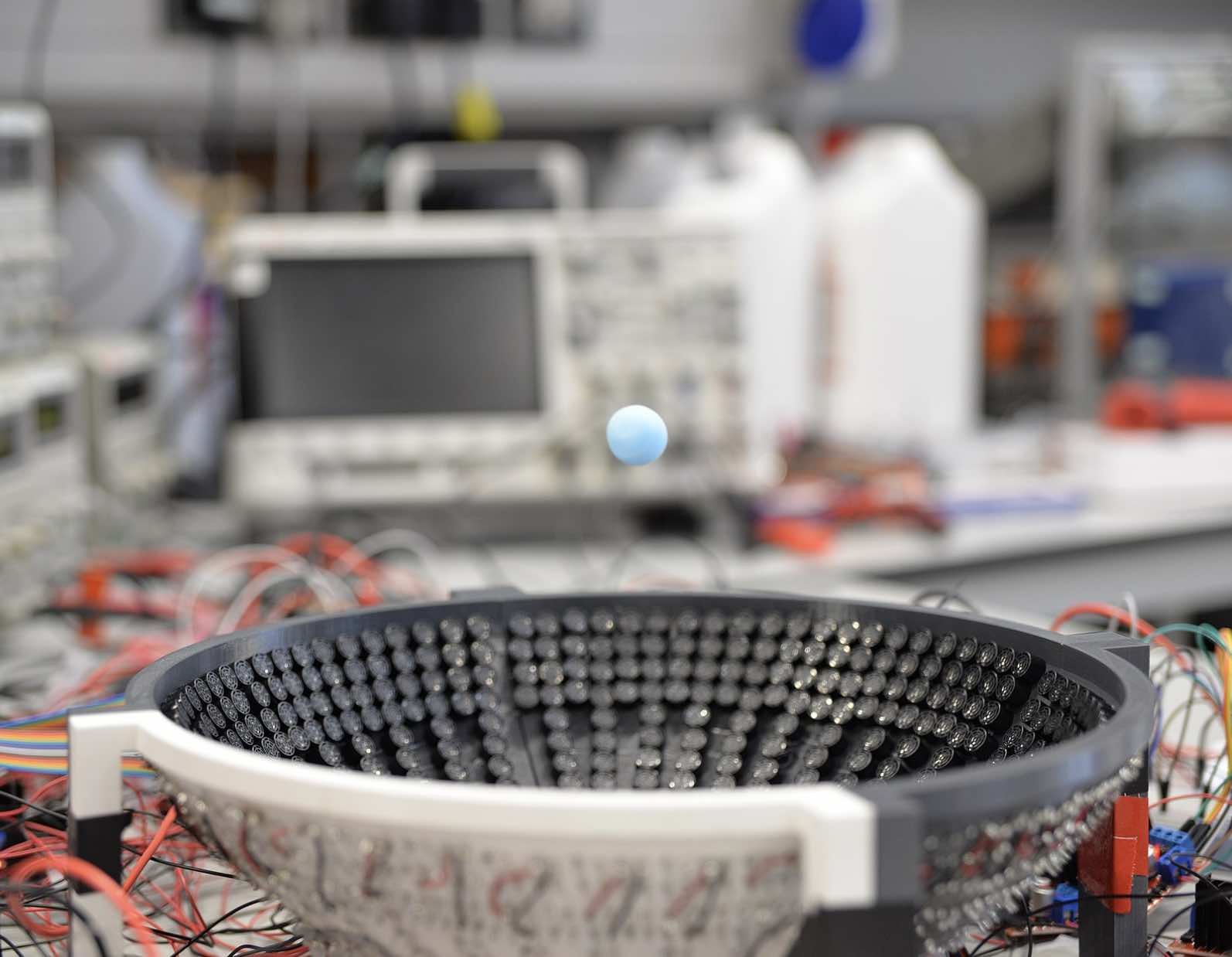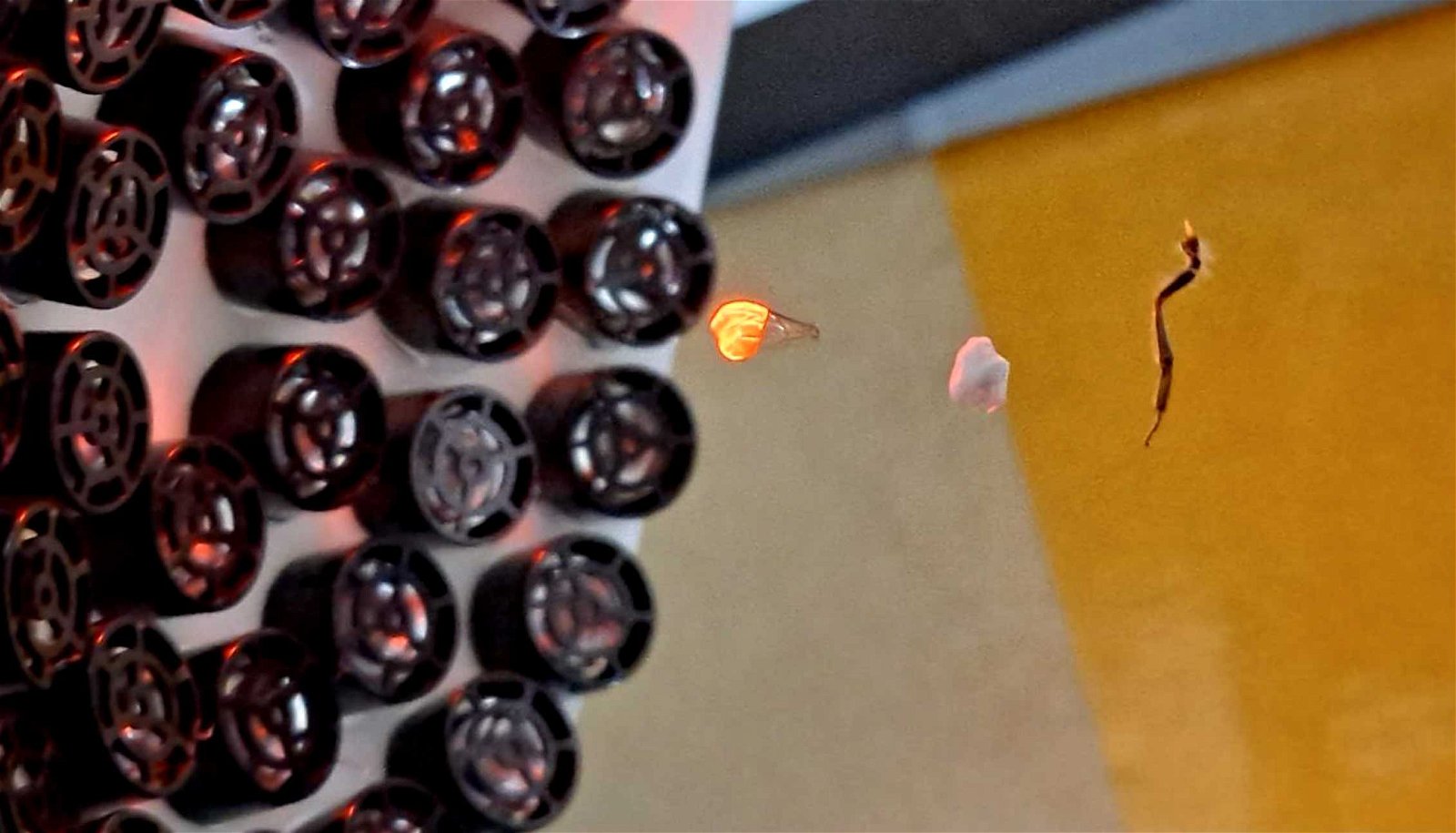Scientists with the University of Technology Sydney (UTS) and the University of New South Wales (UNSW) have developed a method that helps to fine-tune the control of particles using ultrasonic waves according to new research, which they say expands our understanding of the field of acoustic levitation.
The levitation of objects, once a phenomenon seen only in science fiction and fantasy, now represents a field in acoustics with practical applications in multiple research areas, industries, and even among hobbyists. However, the use of high-intensity sound waves to suspend small objects in the air is nothing new. The theoretical basis for overcoming gravity with the help of acoustic radiation pressure goes as far back as the 1930s, when researcher Louis King first studied the suspension of particles in the field of a sound wave, and how this demonstrates acoustic radiation force being exerted against them.
Later calculations beginning in the 1950s helped to further refine our understanding of the acoustic radiation force produced by the scattering of sound waves. However, the modern foundation for acoustic levitation science draws mainly from the work of superconductivity pioneer Lev. P. Gorkov, who was the first to synthesize previous studies and provide a solid mathematical basis for the phenomenon.
Fundamentally, levitation by sound occurs when the propagation of sound produces waves that oscillate but remain fixed in space—otherwise known as a standing wave–which thereby can be used to suspend a particle in three-dimensional space. In the past, most of our understanding of acoustic levitation was predicated on the assumption that particles being trapped during acoustic levitation are spherical.


However, the studies in recent months by researchers with UTS and UNSW have now extended the existing theoretical models to also account for particles with asymmetric properties, which the researchers involved say will allow for a greater diversity of applications for such technology.
Dr. Shahrokh Sepehrirahnama, Ph.D., with the Biogenic Dynamics Lab at UTS’s Centre for Audio, Acoustics, and Vibration, says that broadening models to account for asymmetrical particles was enabled with the help of what is known as Willis coupling. This, in essence, refers to cross-coupling between factors such as velocity and stress, and in the context of the team’s research, was employed “as a measure of asymmetry, capturing the significance of geometrical features.”
Such methodology, according to Sepehrirahnama, shows that “asymmetry changes the force and torque exerted on an object during levitation, and shifts the ‘trapping’ location,” a process which he says, “can be used to precisely control or sort objects that are smaller than an ultrasound wavelength.”
According to the team’s paper, by “designing linear properties of an object using metamaterial concepts,” they discovered that the “nonlinear acoustic effects of radiation force and torque can be controlled.”
“We apply our model to a three-dimensional, subwavelength meta-atom with maximal Willis coupling,” lead author Sepehrirahnama and his co-authors write in the study, “demonstrating that the force and the torque can be reversed relative to an equivalent symmetrical particle.”
“By considering shape asymmetry in the acoustic radiation force and torque, Gorkov’s fundamental theory of acoustophoresis is thereby extended,” the researchers write.
Sepehrirahnama recently said in a press release that his team’s new model “will bring the two trending fields of non-contact ultrasonic manipulation and meta-materials (materials engineered to have a property not found in nature) closer together.” Such technologies have several useful applications, which include the precision control and manipulation of very small objects, including very sensitive biological materials that can thereby be studied without incurring harm through direct contact.
Associate Professor Sebastian Oberst, one of the study’s co-authors, said in a recent statement that many extremely sensitive natural objects like insect appendages have not yet received a complete assessment by scientists largely due to limitations presented by the apparatus required to hold them.
“We don’t even have the tools needed to hold them,” Oberst says. “Touching them can disrupt measurements and using non-contact lasers can cause damage.” Oberst and the team recognize their newly extended models of acoustic levitation could greatly improve methods of non-contact analysis required for such materials, in addition to aiding in the creation of new materials with novel acoustic properties.
The team’s paper, “Willis Coupling-Induced Acoustic Radiation Force and Torque Reversal,” was published in Physical Review Letters in October.
Micah Hanks is Editor-in-Chief and Co-Founder of The Debrief. Follow his work at micahhanks.com and on Twitter: @MicahHanks.

